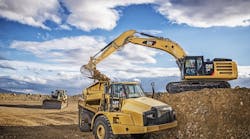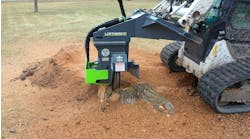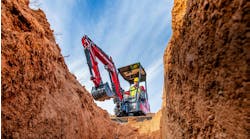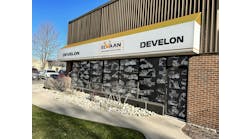Caterpillar posted total sales and revenues of $14.432 billion in the second quarter of 2019, compared to $14.011 billion in the second quarter of 2018, a 3 percent increase. The improvement was primarily the result of favorable price realization higher sales volume driven by improved demand for equipment, including a favorable impact from changes in dealer inventories. The increase was partially offset by unfavorable currency impacts. Sales increased in Construction Industries and Resource Industries, while Energy & Transportation sales decreased. Sales increased in North America and Latin America, partially offset by decreases in Asia/Pacific and EAME.
The Construction Industries segment increased revenue 5 percent from $6.172 billion in the second quarter a year ago to $6.467 billion in the just concluded quarter. Resource Industries increased 11 percent and Energy & Transportation dropped 4 percent. Construction Industries leaped 28 percent in North America, but declined 22 percent in Asia/Pacific.
“Sales and revenues increased this quarter, including a record performance from Construction Industries, which reflected our strong competitive position globally,” said Caterpillar chairman and CEO Jim Umpleby. “Our strong operating cash flow in the quarter allowed us to repurchase shares and pay dividends of about $1.9 billion. This is in line with our intention to return substantially all free cash flow to shareholders.”
The full-year profit per share outlook range is maintained at $12.06 to $13.06, which includes the first-quarter $0.31 per share discrete tax benefit. The company currently expects to be at the lower end of this outlook range. The company continues to expect modest sales growth in 2019, which assumes a recovery in Oil and Gas near the end of the year and dealers working through higher machine inventory levels. The company still expects price realization to offset manufacturing costs. With a higher amount of restructuring costs incurred in the second quarter of 2019, the company expects restructuring costs for the remainder of the year to be significantly lower.
“We expect our profit per share in 2019 to be another record,” added Umpleby. “We have the right strategy in place to deliver long-term profitable growth through our continued focus on strategic investments, including growing services and expanding offerings. We will also continue to focus on driving operational excellence including a flexible and competitive cost structure.”
Operating profit for the second quarter of 2019 was $2.213 billion, up 2 percent compared with $2.167 billion in the second quarter of 2018. The increase of $46 million was due to favorable price realization and lower selling, general and administrative (SG&A) and research and development (R&D) expenses, offset by higher manufacturing costs and unfavorable sales volume because of product mix. The increase in manufacturing costs was primarily due to higher material costs, including tariffs, variable labor and burden and warranty expense. Favorable SG&A/R&D expenses were mostly because of lower short-term incentive compensation expense.
Construction Industries’ profit was a record $1.247 billion in the second quarter of 2019, an 8 percent increase compared with $1.154 billion in the second quarter of 2018. The increase in profit was due to favorable price realization, which was mostly offset by higher manufacturing costs. The increase in sales volume was more than offset by an unfavorable mix of products. Higher material costs and variable labor and burden, including the absence of Brazil urden, including the absence of Brazil incentives, were the primary drivers of increased manufacturing costs.
In Oil and Gas, sales decreased in North America primarily because of the timing of turbine project deliveries that occurred in the second quarter of 2018 and from lower demand for new equipment in the Permian Basin. This was partially offset by increased sales in EAME primarily from higher turbine sales for production applications.
In Power Generation, sales slightly increased mostly because of higher deliveries in North America for both large diesel reciprocating engines and turbines. Increases in North America were partially offset by lower sales in EAME for gas power generation applications.
In Industrial, sales were slightly down, with a decrease in EAME primarily due to unfavorable currency impacts partially offset by higher volume in Asia Pacific and Latin America. In Transportation, sales were slightly lower primarily from the timing of locomotive deliveries in the second quarter of 2018 and reduced marine activity in North America, partially offset by higher sales for rail services.






